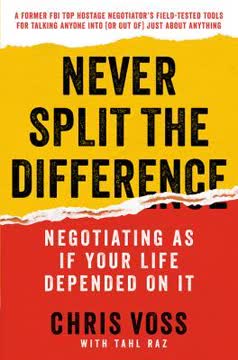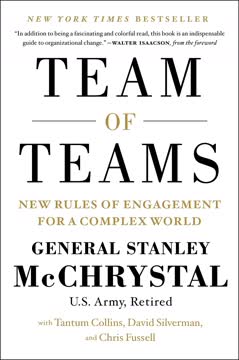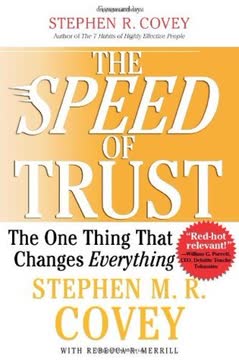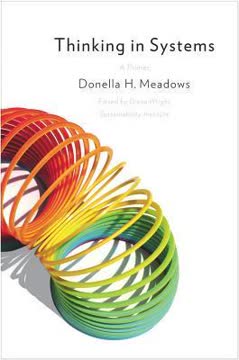Key Takeaways
1. Build a strategic network of 155 key relationships
You have only 150 people total that you can keep up with regularly, and that includes friends and family.
The 5+50+100 model. Power connectors organize their networks into three concentric circles: Top 5 (closest daily connections), Key 50 (important weekly contacts), and Vital 100 (monthly check-ins). This structure allows for efficient relationship management while maintaining a diverse and robust network.
Quality over quantity. Focus on building deep, meaningful relationships rather than accumulating superficial contacts. Evaluate potential connections based on shared values, ability to provide mutual benefit, and alignment with your goals. Regularly assess and update your network, moving people in and out of circles as relationships evolve.
- Top 5: Closest family, friends, and business associates
- Key 50: Important relationships that represent significant value
- Vital 100: Diverse connections across various ecosystems
2. Develop a power connector mindset to forge meaningful connections
The power connector mindset: people must know you, like you, and trust you.
Authenticity and caring. Power connectors are genuinely interested in others and seek to help them succeed. They approach relationships with warmth, empathy, and a focus on adding value. This mindset allows them to build trust and rapport quickly, even with strangers.
Overcoming mental barriers. Many people struggle with networking due to shyness, fear of rejection, or feeling they have nothing to offer. Power connectors recognize these barriers and work to overcome them by reframing their approach. They view every interaction as an opportunity to learn, help, or make a meaningful connection.
- Be authentic and bring your best self to every interaction
- Focus on how you can help others, not just what you can gain
- View strangers as potential valuable connections
- Overcome fears by practicing and reframing your mindset
3. Target and engage with the right people in the right ecosystems
If you want to go fast, go alone. If you want to go far, go with others.
Identify key ecosystems. Successful power connectors recognize the importance of being in the right "rooms" or ecosystems. These include family and friends, passions and interests, career or profession, government and politics, finance, media, industry, and community. Understanding and accessing these ecosystems is crucial for achieving your goals.
Strategic targeting. Before attending events or reaching out to new contacts, prepare by researching the people you want to meet and the value you can offer them. Develop your "share" (personal story), "value-add" (what you can offer), and "ask" (what you need) to make meaningful connections quickly.
- Map out the ecosystems relevant to your goals
- Research key players and potential connections in advance
- Prepare your personal story, value proposition, and specific requests
Use the "Three Golden Questions" to engage effectively:- How can I help you?
- What ideas do you have for me?
- Who else should I talk to?
4. Add value first and consistently to nurture relationships
Giving first is rare and builds trust in a world where talk is cheap and people mistrustful.
The value-add system. Power connectors focus relentlessly on adding value to their relationships. They do this by providing appropriate, unique, and consistent value tailored to each connection's needs and goals. This approach builds trust and strengthens relationships over time.
Follow-up and follow-through. Maintaining strong relationships requires regular contact and consistent value-adding. Power connectors have a system for following up with their network, from daily check-ins with their Top 5 to monthly contact with their Vital 100. They always follow through on commitments and keep their word.
- Add value in various forms: information, introductions, opportunities, support
- Tailor your value-add to the recipient's needs and stage of business
- Follow up within 24 hours of initial contact
Maintain regular contact based on the relationship's importance:- Top 5: Daily
- Key 50: Weekly
- Vital 100: Monthly
5. Leverage your network by connecting your connections
Power connectors do everything possible to make their connections work.
Play 3-D power chess. Power connectors excel at linking people within their network to create maximum benefit for all parties. They think strategically about how connections can help each other and actively facilitate introductions and collaborations.
Create power triangles. One of the most effective ways to add value is by connecting two people who can benefit from knowing each other. This "triangulation" strengthens your relationships with both parties and increases the overall value of your network.
- Identify potential synergies between your connections
- Facilitate introductions that create mutual benefit
- Use your network to solve problems and create opportunities for others
- Always follow up after making an introduction to ensure a positive outcome
6. Master online and in-person networking strategies
The digital revolution and societal shifts have brought us to a new period. It is called the Relationship Era.
Leverage online platforms. Use LinkedIn, Twitter, and other social media to maintain and expand your network. Share valuable content, engage with others' posts, and use these platforms to research potential connections before meeting in person.
Maximize conference networking. Prepare thoroughly for conferences and industry events. Research attendees, set clear goals, and have a strategy for making meaningful connections. Follow up promptly with new contacts and add value immediately.
- Use LinkedIn to map and expand your professional network
- Engage on Twitter to connect with thought leaders and share insights
Prepare thoroughly for conferences:- Research speakers and attendees
- Set specific networking goals
- Prepare questions and conversation starters
- Follow up within 24 hours of making a new connection
7. Women can excel as power connectors by playing to their strengths
Fortune is in the follow-up.
Leverage natural strengths. Women often excel at building relationships, collaborating, and adding value consistently. These skills are crucial for power connecting. Women should embrace these strengths while also developing skills in strategic networking and self-advocacy.
Build diverse networks. Women tend to network more horizontally (peer-to-peer) than vertically. To advance, they should focus on building relationships with senior-level contacts and potential sponsors. Additionally, women should support other women by making introductions and sharing opportunities.
- Embrace collaborative and relationship-focused approach to networking
- Develop skills in strategic networking and self-advocacy
- Build relationships with senior-level contacts and potential sponsors
- Support other women through introductions and shared opportunities
- Use "relentless pleasantness" when asking for what you want
Last updated:
FAQ
What's How to Be a Power Connector about?
- Focus on Networking: The book emphasizes the importance of building high-value, strategic relationships in both business and personal life. It provides a systematic approach to networking that goes beyond mere contact collection.
- Power Connector Mindset: Judy Robinett introduces the concept of the "Power Connector," someone who connects people for mutual benefit and success. This mindset is essential for leveraging networks effectively.
- 4 Phases of Power Connecting: The book outlines a four-phase system: Prepare to Power Connect, Target, Connect and Engage, and Reconnect, Assess, and Activate. Each phase includes specific steps to maximize networking efforts.
Why should I read How to Be a Power Connector?
- Practical Strategies: The book offers actionable strategies for building and maintaining a robust network, making it a valuable resource for entrepreneurs and professionals alike.
- Real-Life Examples: Judy shares personal experiences and those of others to illustrate the principles of power connecting, making the concepts relatable and easier to implement.
- Comprehensive Framework: The 5+50+100 rule provides a clear framework for organizing and prioritizing connections, focusing on quality over quantity.
What are the key takeaways of How to Be a Power Connector?
- Value First Approach: The book stresses the importance of adding value to your connections before asking for anything in return, building trust and strengthening relationships.
- Diverse Ecosystems: Robinett emphasizes connecting with individuals from various ecosystems—family, friends, career, government, and more—to enhance opportunities and resources.
- Power Circles: The 5+50+100 model categorizes connections into three groups: Top 5, Key 50, and Vital 100, helping manage and nurture relationships effectively.
What is the 5+50+100 rule in How to Be a Power Connector?
- Categorization of Connections: Organize your network into three concentric circles: Top 5 closest connections, 50 key relationships, and 100 vital contacts, prioritizing networking efforts.
- Focus on Quality: By limiting focus to these specific groups, you ensure nurturing high-quality relationships that provide mutual benefits, encouraging deeper engagement with fewer people.
- Regular Engagement: The model encourages regular communication with your Top 5 and Key 50, while maintaining a lighter touch with your Vital 100, keeping your network active and engaged.
How does Judy Robinett define a "Power Connector" in How to Be a Power Connector?
- Bridge Builder: A Power Connector is someone who connects individuals across different networks, facilitating valuable relationships and acting as a bridge between people who can benefit from knowing each other.
- Generosity and Support: They focus on adding value and supporting others without expecting immediate returns, fostering trust and strengthening their network.
- Strategic Relationships: Power Connectors understand the importance of strategic relationships and actively work to cultivate them, leveraging connections for mutual success.
What are some effective strategies for connecting with others in How to Be a Power Connector?
- Research and Prepare: Before reaching out, gather information about the person you want to connect with, tailoring your approach based on their interests and background.
- Craft Your Share: Develop a personal narrative that includes who you are, what you do, and what you’re passionate about, creating a genuine connection and making you memorable.
- Add Value First: Always look for ways to provide value to your connections before asking for anything, such as sharing information, making introductions, or offering assistance.
What are the common mistakes people make in networking according to How to Be a Power Connector?
- Wrong Places: Many people network in environments that do not align with their goals, wasting time and energy. It’s crucial to identify the right ecosystems for your needs.
- Lack of Strategy: Failing to have a clear plan for networking can lead to ineffective connections. A strategic approach is necessary to build meaningful relationships.
- Ignoring Value: People often focus on what they can gain from connections rather than what they can offer, weakening relationships over time.
What is the importance of ecosystems in How to Be a Power Connector?
- Web of Connections: Ecosystems are networks of individuals linked by common interests, providing access to knowledge, resources, and opportunities. Understanding these ecosystems is vital for effective networking.
- Diverse Access: Engaging with multiple ecosystems allows you to tap into a broader range of resources and connections, enhancing your ability to achieve your goals.
- Strategic Entry: Knowing how to navigate different ecosystems can open doors that would otherwise remain closed, making it essential to identify key players and understand the dynamics within each ecosystem.
How can I effectively follow up after meeting someone, according to How to Be a Power Connector?
- Immediate Reconnection: Send a personalized follow-up email or LinkedIn request within 24 hours of meeting someone, showing your interest and commitment to building the relationship.
- Add Value in Follow-Up: Include something of value in your follow-up, such as an article or a resource related to your conversation, demonstrating thoughtfulness and genuine interest.
- Keep the Introducer in the Loop: If someone introduced you to the new contact, inform the introducer about the outcome of your meeting, strengthening your relationship with both parties.
What are the best quotes from How to Be a Power Connector and what do they mean?
- “Skill is fine, and genius is splendid, but the right contacts are more valuable than either.” This quote emphasizes the importance of networking and relationships in achieving success, suggesting that connections can lead to opportunities that skills alone cannot.
- “Forget the MBA. Learn to network.” Highlights the idea that practical networking skills are more valuable than formal education in many business contexts, directly impacting career and business success.
- “The more connection, the more abundance.” Reflects the belief that strong networks lead to greater opportunities and resources, underscoring the idea that relationships can amplify success in various aspects of life.
How can I overcome shyness and self-consciousness in networking as suggested in How to Be a Power Connector?
- Shift Focus: Instead of worrying about how you are perceived, focus on the other person and what you can learn from them, alleviating self-consciousness and making interactions feel more natural.
- Practice Makes Perfect: Engage with strangers in low-pressure situations to build confidence, starting small by initiating conversations in everyday settings like coffee shops or waiting rooms.
- Embrace Authenticity: Be genuine in your interactions, sharing your true self to create a more comfortable atmosphere and encourage others to open up as well.
How can I create intrigue during initial meetings, as suggested in How to Be a Power Connector?
- Be Brief and Engaging: Keep your introduction concise but engaging, sharing a compelling fact or story that piques interest without overwhelming with information.
- Ask Thoughtful Questions: Initiate the conversation by asking open-ended questions that encourage the other person to share more about themselves, showing interest and establishing rapport.
- Leave Them Wanting More: Create enough intrigue that the other person wants to continue the conversation or meet again, focusing on building a connection rather than impressing them with everything you know.
Review Summary
How to Be a Power Connector received mostly positive reviews, with readers praising its practical advice on strategic networking. Many found the 5+50+100 system helpful for managing relationships. Reviewers appreciated the emphasis on adding value and connecting others. Some criticized the book for being repetitive or too focused on high-level networking. Introverts found it challenging but useful. Overall, readers felt inspired to improve their networking skills and saw potential for career advancement through implementing the book's strategies.
Similar Books










Download PDF
Download EPUB
.epub digital book format is ideal for reading ebooks on phones, tablets, and e-readers.




